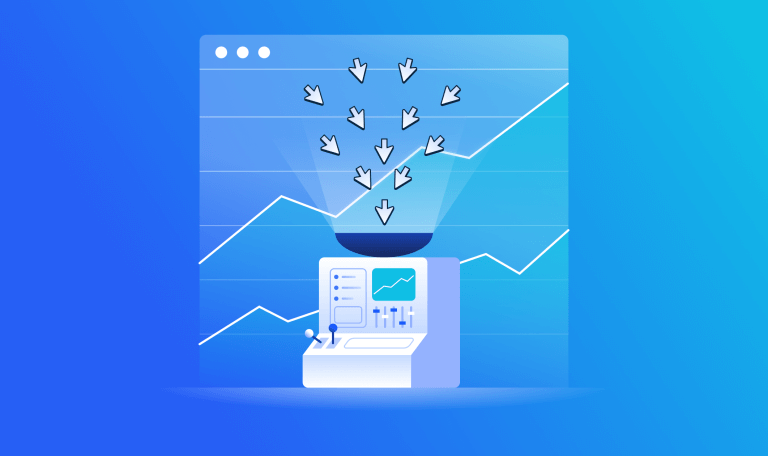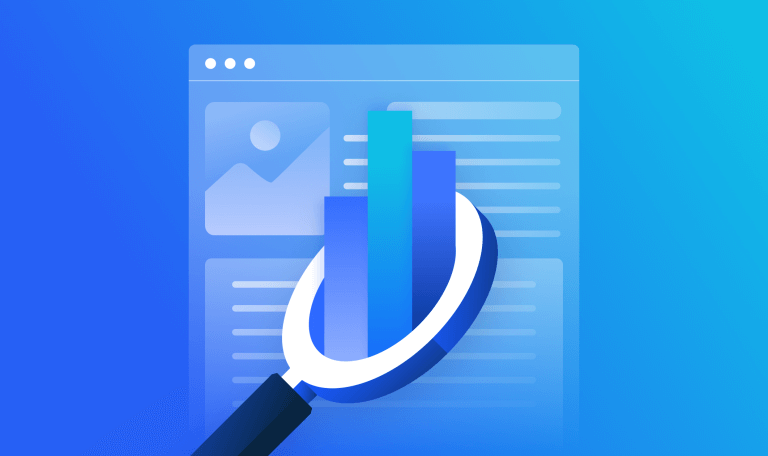 Marketing Intelligence
Marketing Intelligence
Off-Page SEO Checklist to Skyrocket Your Business

Getting off-page SEO right is crucial to your site rankings.
In other words, what happens after you publish your latest blog post is almost as important as the blog post itself.
The problem is, to effectively write, publish, and promote content, you must see to a seemingly endless list of tasks.
To help you stay focused, in this post, I’ll be sharing a comprehensive off-page SEO checklist designed to get your content in front of your intended audience.
It’s important to understand that this post is not intended to be an in-depth guide, but rather a checklist. If you have any questions along the way, I’m providing internal links to more in-depth blog posts.
Now before I get to the checklist, I have to explain one thing.
What’s the Difference Between On-Page and Off-Page SEO?
On-page SEO refers to SEO optimizations on pages on your site that signal to Google what your content is about so that Google can use your content to answer user queries. Off-page SEO on the other hand refers to SEO activities designed to improve your site’s authority that happen off your site.
Examples of on-page SEO include optimizing:
Examples of off-page SEO includes:
- Link building
- Digital PR
- Social media
- Etc.
Now that we’ve covered that, let’s jump in.
The 10-Step Off-Page SEO Checklist
Here are 10 steps to get your content found online. Although not all of the items on this list are appropriate for every piece of content, I’m including everything in one comprehensive checklist so that you don’t miss anything.
1. Backlinks: Evaluate Your Link Profile
The first step is to understand your site’s backlink profile. This is important because it’ll show you how your site stacks up against your competitors.
Once you have this clear, you’ll have a basic idea as to how strong your domain is and which pages are the strongest. This is important to understand as in later steps, you’ll be using this information in two ways.
Evaluating your link profile will help you understand:
- How strong your domain is in comparison to your competitors
- Which pages will provide the most value when setting up internal links
In order to set this up I’ll show you how to see your backlink profile with Google Search Console.
To see your backlink profile, log into your account and open the Links report.
In the overview you’ll see:
- External links
- Internal links
- Sites that link to your site
- Anchor text
Once you have an understanding of your site’s link profile, it’s time to do some SEO competitor analysis.
2. Competitor Analysis
In order to use the link profile analysis to improve your SEO, it’s important to see how your site compares to other sites in the market. This means you need to first understand which sites compete with your site for attention.
You can do this by doing a little SERP research. Simply Google all your target keywords and note down the top sites on the SERPs.
Now, SERP analysis works well if you are only targeting a small number of keywords. If on the other hand, you want to scale this up a bit, it pays to use SEO tools.
An easy way to find a list of competitors is to look at the Similarweb Organic Competitors report in the Website Analysis tools.
This will show you sites that are ranking for similar keywords to your site.
Now, if your site is not yet ranking for any keywords, you can easily find competitors by analyzing your top competitor and looking at the Organic Competitors report.
You can verify if any of the sites listed are really competitors by clicking Quick Analysis. This will give you a brief overview of their traffic, engagement, marketing channels, and more.
Once you have a list of obvious competitors, you can look at how they are promoting their sites. For instance, try to figure out what links they have so that you can create a benchmark for your site.
By comparing your competitor’s link profiles to yours, you have a rough idea of how competitive your site is. This will help you understand if you need to be focusing on building links. It’ll also help you to understand which sites regularly link to content in your niche.
That said, it’s important to understand that not every link that points to your competitors is appropriate for your site.
3. Link Building Strategy
Although link building is one of the most effective ways to build site authority, it’s by far the most difficult. The reason it’s so difficult is as a link builder, you are trying to influence site owners to link out to your assets. That’s more often than not, painfully difficult to find a tangible reason for those sites to link out to your pages.
This is why you should be strategic when trying to build links.
As a big-picture overview, there are two main principles to link building.
- You need the type of asset that people in your niche regularly link out to
- You need to build relationships with people in your niche before asking for links
Creating an asset that’s worth linking to often requires research. For instance, does your audience link out to stats and data to support a position that they are taking in a blog post? If so, try to create an asset that presents well-sourced data in a clear visual manner.
On the other hand, what links could you get as a local business? Could you get links from testimonials from vendors that your business has served?
Once you have the right assets, it’s time to get them in front of the people who might link out to them.
4. Link Outreach
As I mentioned above, you need a stellar asset that people in your niche want to link to before doing any link outreach. Once you have that asset, the next step is to get it in front of the right people.
This takes time and effort and can be broken down into the following steps:
- Find the right people
- Make sure to make your outreach highly personalized
- Followup
When trying to find the right people, you should only reach out to people who are actively growing their online presence. For instance, they should be updating their blog regularly and looking to grow their organic traffic. What’s more, they must be in your niche.
Once you have a good list of prospects, the next step is to build a relationship with them. If they are looking to increase their online presence, they are likely to be posting regularly on social media. Comment on their posts. It’s important to be genuine when doing this. This might take time and effort but is well worth it.
Once you’ve built a relationship with them, and it makes sense to, try reaching out to them. Always remember you are asking them for something. When your prospect opens their emails, the first thing they are thinking about is what’s in it for them. This means your outreach should be highly personalized with messaging that resonates with them personally and immediately.
5. Reply to Haro Requests
This is one of the easiest ways to build links and if you are successful at it, you might build links from high-authority pages. HARO is a site designed to help journalists source information from subject matter experts.
To get started, sign up to become a source. When you do that, HARO will send you a daily digest of content requests from journalists and website owners.
All you need to do is regularly answer these requests and if your answers are high quality, you are likely to acquire links back to your site. When doing this, it’s important to realize that journalists’ requests are time-sensitive. This means you must act quickly to be successful.
The only disadvantage of this strategy is you can only really build links to your home page and not to specific pages on your site.
6. Broken Link Building and Reclaim Lost Links
Now, this step follows from the previous one. If you see that you’ve lost a link, you must act fast to reclaim it. But, the first step is to understand why you lost the link in the first place. In general, there are two reasons:
- The linking page has been deleted
- The linking page has been updated and your link has been deleted
If the page was deleted, there isn’t much you can do about it. The linking site no longer needs your page. But, if the page has been updated, your link might have been deleted by accident. If that’s the case, you should reach out to the site owner as soon as possible.
The reason that time is of the essence is they have just worked on the post. This means you have a far greater chance of convincing them to make changes to an old post.
7. Directory Citations, Business Reviews, and Comments
If you are running a local business, an important local SEO strategy is to create local citations. Local citations are online mentions of your business. In general, local citations include the business name, address, phone number, and website URL. Typical places to build citations are local business directories such as Yellow Pages and Yelp.
It’s important to note that when you build out your local citations, you must keep your business information consistent.
Now before you get started with this strategy, it’s important to only submit your business to trustworthy lists.
Some known quality business listings are:
- Google Business Profile
- Yelp
- Apple Maps
Now don’t limit your business to these. Try to find some that are specific to your industry.
What’s more, by far your most important citation is your Google Business profile (which was previously called Google My Business.) Make sure when you create your Google Business profile that everything is filled out and accurate. What’s more, your services should match up with your services pages on your website.
Another thing to note is you must keep your listings updated. As your business grows and evolves, so should your business listings. Not having up-to-date opening times or addresses could lead to unhappy customers. Also, make sure to answer any and all questions and business reviews.
8. Paid Promotion
Paid promotion is often overlooked when it comes to content promotion and link building. The reason is advertisers would rather spend money on ads that bring in sales.
Now, this is a relevant point but often getting your top-of-the-funnel content in front of a targeted audience could potentially bring more benefits than you think. Especially if that content is a strategic part of a well-thought-through sales funnel.
The obvious place to promote content is on social media. Social media is great because it gives you an opportunity to target people in your niche.
That said, another lesser-known strategy is to use Google Ads to promote blog content. The reason this can work to your advantage is not too many sites are doing it. And since Google Ads work on an auction system, the low competition generally results in a low cost per click.
What’s more, Google Ads are highly targeted to people who are searching Google. Serving the right search intent could bring you a highly targeted audience and potentially some organic links.
One caveat is if you are spending money on content promotion, in order for it to make sense you should have some goal in mind. Are you trying to get brand awareness? Are you trying to build an email list?
9. Guest Blogging
Although Google considers guest blogging links as unnatural links, including links in a guest post is a great way to promote your site and build your brand. Google has been devaluing them for years algorithmically and suggests having rel-sponsored / rel-nofollow attached.
That said, guest posts can introduce your site to a whole new audience. If you do a great job of creating stellar content that audience could become raving fans of your blog or better yet could become profitable email signups.
The point here is no-follow links can have a huge impact on your business.
10. Social Media
If you are publishing content on the web and you are not on social media, you are missing out on some big potential. The reason is when you publish content on the web, it usually takes time to rank and bring traffic (if it brings traffic at all).
This means if you’ve created a high-quality blog post or video that’s designed to move your business forward, it makes absolutely no sense to leave it and hope to get traffic later. Instead, you should attempt to get it in front of your audience as quickly as possible. Well executed social media can potentially bring hundreds of visitors to your site.
What’s more, even though social media only provides no-follow links, it can still benefit your SEO. How?
Social media helps you:
- Understand what content your audience wants to see
- Build brand awareness which can increase branded organic traffic
- Get your content in front of a targeted audience which increases your chances of earning organic links
What’s more, according to Jason Barnard, Google has always crawled social media sites. As Google becomes more sophisticated, Google can now use that information to ‘understand’ your brand better. As Google understands the entity of your brand better, it is able to represent your brand in the SERPs more effectively.
This means you should have a well-thought-through social media strategy and you should make time to execute your strategy.
To do this, you need to:
- Identify high-value content. This means content that people in your niche want to share and engage with.
- Create mini content pieces out of your long-form content. This includes long-form social media posts, quotes, images, and anything you think you can post on social media that your audience will engage with.
- Share your mini content pieces relentlessly on social media. Don’t be afraid to share something more than once. People on social media have short memories.
- Track everything to figure out what social media content works the best. By doing this you can constantly improve your social media engagement.
Content Promotion Takeaways
As you’ve seen there are many different ways to promote your content online. Yes, link building is important but your site can benefit in so many other ways, including social media, paid promotion, guest blogging etc.
The only issue is budgeting time and execution. As a business, it’s important to figure out which outreach strategies will benefit you the most. You should then budget time and be consistent. A little bit of consistency goes a long way.
I hope this checklist will help you plan your off-page strategy by seeing what activities will help your business the most.
FAQs
What is the difference between off-page and technical SEO?
Off-page SEO refers to SEO optimizations made outside of your site to improve your rankings and increase its authority. It involves activities such as link building, online reputation management, and influencer outreach. Off-page SEO aims to build relationships, generate backlinks, and establish your website’s reputation across the web.
Technical SEO, on the other hand, focuses on optimizing the technical aspects of your website to ensure it is easily accessible, crawlable, and indexable by search engines. It involves optimizing factors such as site speed, mobile-friendliness, site architecture, URL structure, canonical tags, XML sitemaps, and robots.txt files. Technical SEO aims to improve the website’s technical foundation, making it easier for search engines to understand and rank.
What is on-page vs. off-page SEO?
On-page SEO focuses on optimizing elements within your website itself, such as content, keywords, meta tags, and URL structure, to improve search engine rankings and user experience.
Off-page SEO, on the other hand, involves external factors like building backlinks, social media engagement, online reputation management, and influencer outreach, which aim to enhance your website’s authority, credibility, and visibility across the web.
What are the off-page SEO types?
Off-page SEO refers to the optimization efforts made outside of your own website to improve its search engine rankings. These efforts aim to increase the website’s authority, relevance, and credibility in the eyes of search engines. Here are some common types of off-page SEO techniques:
- Link building
- Digital PR
- Podcasting
- Social media marketing
The #1 keyword research tool
Give it a try or talk to our marketing team — don’t worry, it’s free!











